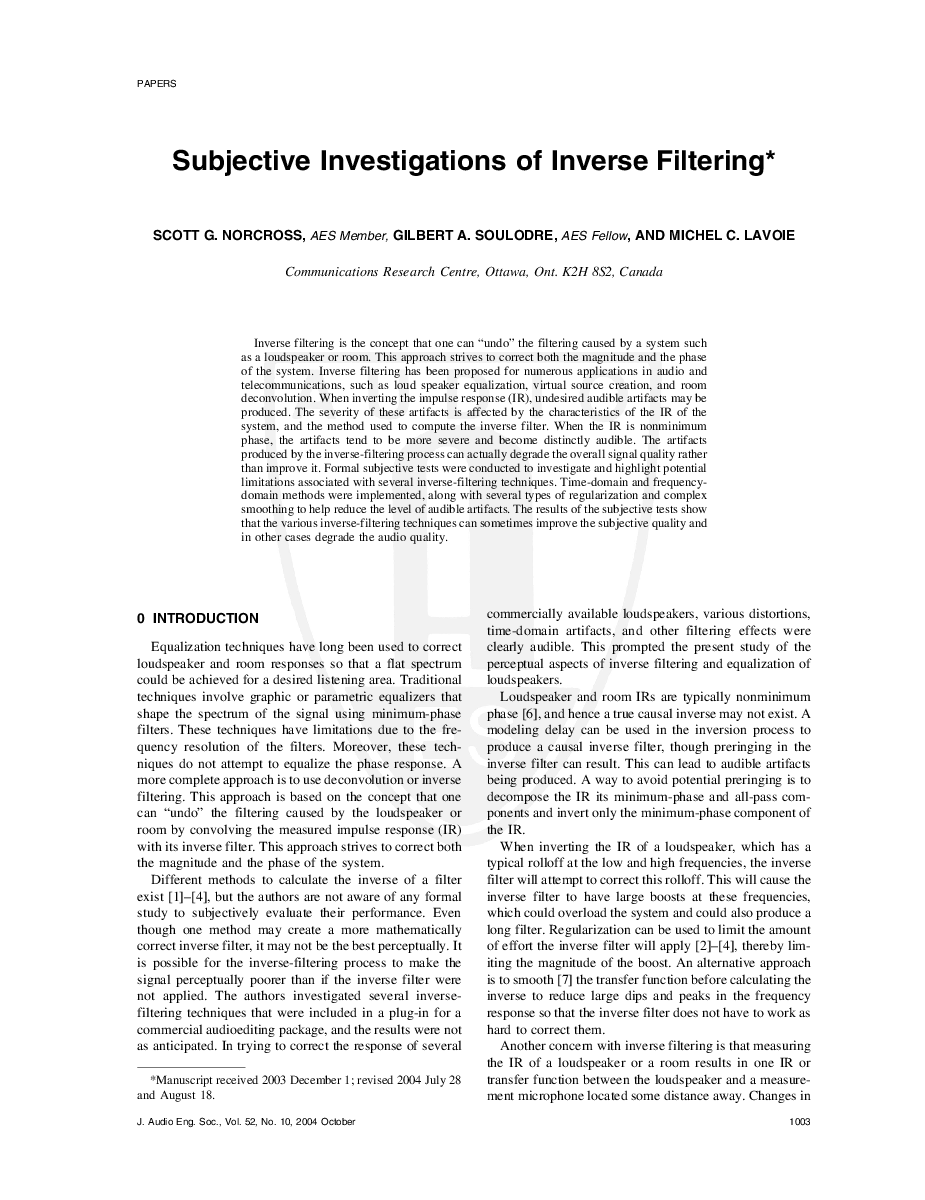Home / Publications / E-library page
You are currently logged in as an
Institutional Subscriber.
If you would like to logout,
please click on the button below.
Home / Publications / E-library page
Only AES members and Institutional Journal Subscribers can download
Inverse filtering is the concept that one can "undo" the filtering caused by a system such as a loudspeaker or room. This approach strives to correct both the magnitude and the phase of the system. Inverse filtering has been proposed for numerous applications in audio and telecommunications, such as loud speaker equalization, virtual source creation, and room deconvolution. When inverting the impulse response (IR), undesired audible artifacts may be produced. The severity of these artifacts is affected by the characteristics of the IR of the system, and the method used to compute the inverse filter. When the IR is nonminimum phase, the artifacts tend to be more severe and become distinctly audible. The artifacts produced by the inverse-filtering process can actually degrade the overall signal quality rather than improve it. Formal subjective tests were conducted to investigate and highlight potential limitations associated with several inverse-filtering techniques. Time-domain and frequency-domain methods were implemented, along with several types of regularization and complex smoothing to help reduce the level of audible artifacts. The results of the subjective tests show that the various inverse-filtering techniques can sometimes improve the subjective quality and in other cases degrade the audio quality.
Author (s): Norcross, Scott G.; Soulodre, Gilbert A.; Lavoie, Michel C.
Affiliation:
Communications Research Centre, Ottawa, Ontario, Canada
(See document for exact affiliation information.)
Publication Date:
2004-10-06
Import into BibTeX
Permalink: https://aes2.org/publications/elibrary-page/?id=13022
(469KB)
Click to purchase paper as a non-member or login as an AES member. If your company or school subscribes to the E-Library then switch to the institutional version. If you are not an AES member Join the AES. If you need to check your member status, login to the Member Portal.

Norcross, Scott G.; Soulodre, Gilbert A.; Lavoie, Michel C.; 2004; Subjective Investigations of Inverse Filtering [PDF]; Communications Research Centre, Ottawa, Ontario, Canada; Paper ; Available from: https://aes2.org/publications/elibrary-page/?id=13022
Norcross, Scott G.; Soulodre, Gilbert A.; Lavoie, Michel C.; Subjective Investigations of Inverse Filtering [PDF]; Communications Research Centre, Ottawa, Ontario, Canada; Paper ; 2004 Available: https://aes2.org/publications/elibrary-page/?id=13022
@article{norcross2004subjective,
author={norcross scott g. and soulodre gilbert a. and lavoie michel c.},
journal={journal of the audio engineering society},
title={subjective investigations of inverse filtering},
year={2004},
volume={52},
issue={10},
pages={1003-1028},
month={october},}